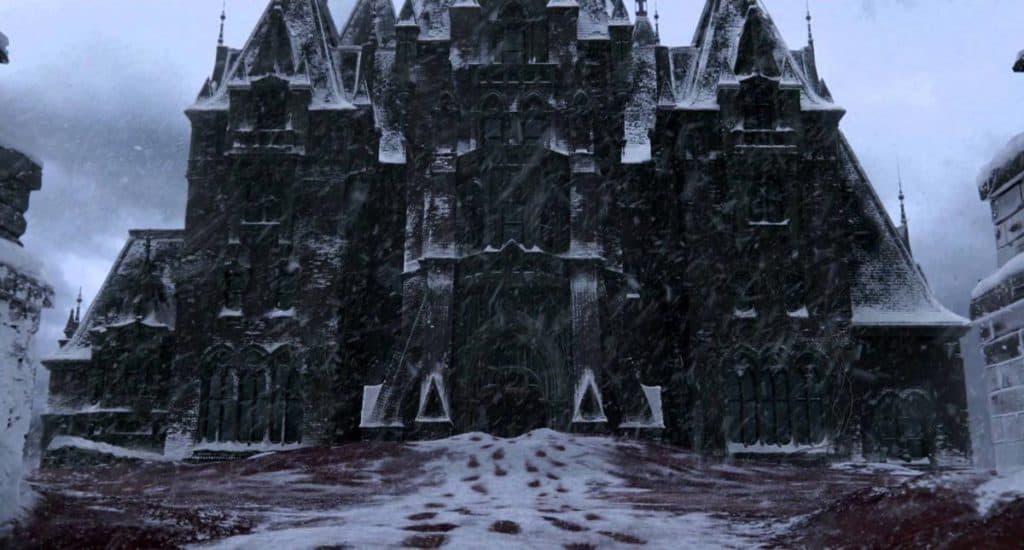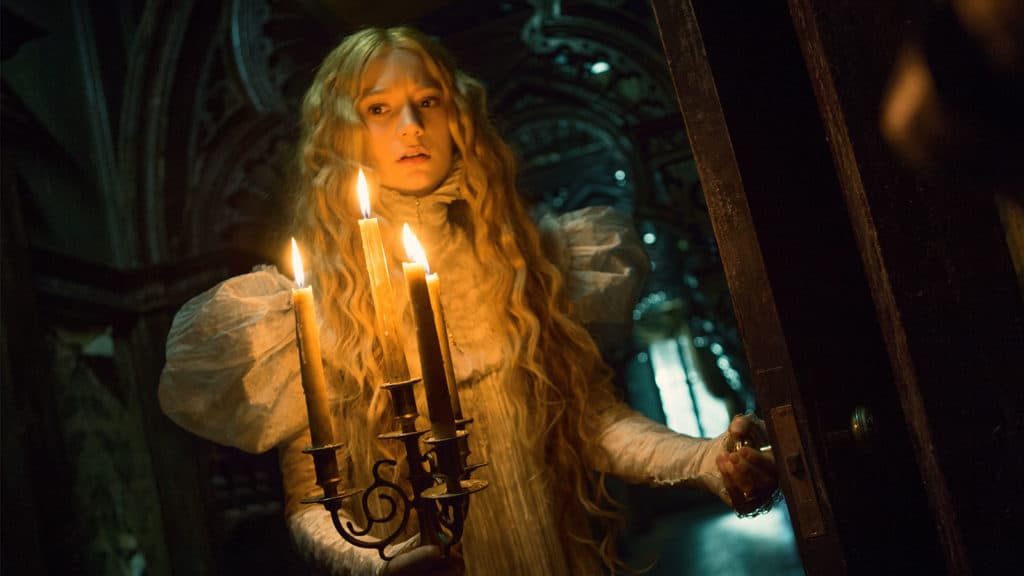
I will forever be fascinated by the fact that American filmmakers fundamentally misunderstand the appeal of ghost stories within the horror canon and, consequently, can never seem to make ghosts scary in the American milieu. Europe gets it (that’s where all the great classic ghost stories seem to come from). Japan gets it (that’s pretty much most of what the turn-of-the-millennia J-Horror output consisted of). Just next door to us, even Latin America gets it (for a start, giving us the likes of The Devil’s Backbone, Tigers Are Not Afraid and La Llorona). But here in the United States, we have Poltergeist (1982) and… ummm… A Nightmare on Elm Street (1984) I guess?
It only makes sense, the first great American ghost story in some thirty years should come to us from a director cultivated from beyond our borders. Mexican auteur Guillermo del Toro is by no means a stranger to ghostly fiction, having directed the aforementioned The Devil’s Backbone (2001) – incidentally my favorite of his films – and produced J. A. Bayona’s The Orphanage (2007). Drawing on his Old World passions, Latino roots and a dropped thread of American horror cinema last scene with The Shining (1980), he gave us Crimson Peak, an immaculately crafted gothic mystery that proceeded to confound just about every film critic and horror fan that came across it.

Crimson Peak, incidentally, follows the newly dispossessed Edith Cushing (Mia Wasikowska): an aspiring author and frequent observer of ghosts. Following a family tragedy, and with little material alternatives given her station in life, she marries the impoverished Sir Thomas Sharpe (Tom Hiddleston) and moves in with his sister Lucille (Jessica Chastain) despite the ghostly warnings she has received all her life about their dilapidated estate, the ominously named Crimson Peak. Although Edith earnestly tries to make a new home for herself in the decrepit manor, it soon becomes apparent that “a house as old as this one becomes, in time, a living thing,” and she is forced to contend with the dark, resurgent past of Crimson Peak before it claims her life entire.
When it was released in 2015, the dominant complaint levied at the film – by critics and audiences alike – was that the film was something of a bait-and-switch: selling itself in both concept and its ad campaign as a horrific ghost story, whereas the ghosts were minimal and narratively superfluous. One critic in particular bemoaned that you could edit the ghosts out of the film entirely and still have a satisfying, atmospheric and entirely cogent gothic horror film… never actually realizing that that was entirely the point of the film.

It’s no secret that del Toro loves monsters, often sympathizing with their tortured lot in life above and beyond any of his human characters. Consequently, his unique sensibilities are perfectly tuned into the structural and thematic purpose of ghostly fiction in a way that Americans, by contrast, are uniquely oblivious to. They are not so much a tangible presence and visceral threat to the safety of the story’s living characters, but rather a tormented representation of past injustices and lingering trauma. They are not the movie’s monstrous antagonists – those are the flesh-and-blood humans that have injured them so – but rather a spectral manifestation of the inhuman wrongs already done to them. Whereas American ghost stories, even the best of them, try to give their human protagonists something flashy to fight in the film’s third act, del Toro buries the lead right at the outset, when Edith herself explains that “it’s not a ghost story [… the ghost is] a conduit, a pretext to talk about spirituality. The ghost acts as a metaphor.”
Maybe it’s because America is such a young country, especially by the reckoning of the White descendants of the European emigrants who invaded it centuries ago. From my admittedly outsider’s perspective on the matter, Latin America seems far more in-tune with the ghastly crimes committed against its indigenous populations, Europe seems far more in-tune with the shear weight of prior generations on the present one and Asia’s collectivistic culture is more immediately centered around those that have already cast off this mortal coil. America, however, is bullheadedly forward-looking. As the civil uprisings of the summer have inescapably highlighted, Americans have turned a blind eye to its own ghastly past for as long as they have been here, and they have not yet even begun to reckon with the emerging ghosts of their past.

While I too will admit to wishing that there was a bit more ghostly business in the film’s plot, that would merely be asking for more set-dressed on what is already a perfectly-calibrated horror film. The intimate cast is immaculately well-chosen for their various roles (with Tom Hiddleston being a particular standout among them). Crimson Peak itself is perhaps del Toro’s greatest achievement in set design, whose various levels, at times, seem ephemerally haunting, viscerally grounded and like some hellish, bloody organ. The goings-on of the plot make excellent use of the specters when needed, but, as mentioned previously, work entirely well without the added thematic weight and visual appeal that they offer. And, when the ghosts do turn out, they are some of the most ghastly creations of del Toro’s dark imagination.
Admittedly, compared to the films discussed already in this autumnal review series, Crimson Peak can’t help but feel more of a light-weight offering: a sometimes-scary and frequently well-told story not unlike an old-school Brothers Grimm offering. Even when it’s firing on all cylinders, it can’t quite manage what Blood Quantum (2020), Us (2019), Hereditary (2018), Mother! (2017) or The Witch (2016) all seem to achieve so effortlessly. Even films that haven’t made the cut – like La Llorona and Tigers Are Not Afraid outperform Crimson Peak at it’s own game (although, admittedly, none is ever so handsome while doing it as del Toro’s frightful feature). And yet, this film was accomplished in Hollywood which, as previously mentioned, is historically and culturally ill-equipped for these kinds of stories, and that fact gives hope that there are still further depths to delve with this kind of story in the United States, perhaps in a much more meaningful context such as the wrongs done to the slaves forcibly immigrated from Africa or the indigenous populations slaughtered by the European colonists (it seems especially fitting that I am writing this on Indigenous Peoples Day, as the “Columbus Day” factions lashing out against that gradual shift in focus continue to draw attention to the unreconciled truth of our collective past). Or, to look at it another way, Crimson Peak is the least-appreciated of del Toro’s works, an unsung masterpiece from one of our unquestionably greatest living filmmakers, and his trademark blend of atmospheric horror, thematically dense narratives and lush visuals make this ideal October viewing.
 Follow Us
Follow Us





